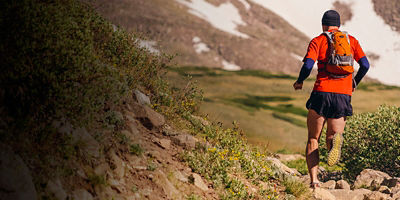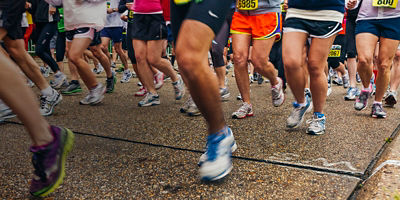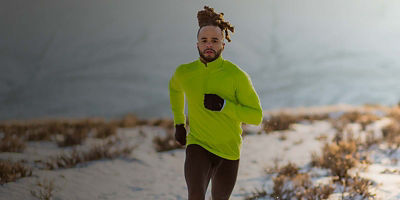
Whether you’re a kayaker, trail runner, mountain biker, or hiker, winter is the perfect time to establish an indoor training routine. Weight training increases your muscular strength (obviously), but it also fortifies your connective tissue, is good for building bone density, and can help improve balance and endurance—all good things for outdoor athletes.
With all exercises, proper form is imperative, as is keeping movements in control within a comfortable range (especially when using weights). Do these exercises at home or in a gym to get in top shape for when warmer arrives—no matter what you do outdoors, you’ll do it better.
1. Farmer’s Carry
How: Squat down and grasp a free weight in each hand (start with a low weight amount and build up to heavier). Keeping your core tight and engaged, stand up while holding the weights. Once standing, lift your collarbone and pull your shoulder blades back and down, keeping your head in-line with the rest of your body (not in front of or behind you). With your core tight, walk forward your desired distance before squatting to put the weights down—start with roughly 20 yards and if that feels too easy, go farther and/or add weight. Depending on how much space you have, you may have to walk forward, then turn around and walk back. Repeat for three repetitions.
Why: Holding dumbbells in each hand while you walk strengthens your core as well as virtually every muscle from your calves and hamstrings to your traps, lats, forearms, and hand muscles. This exercise also increases your endurance. Your performance in literally every outdoor sport can benefit from the muscles and systems worked by a simple farmer’s carry.
2. Air Squats
How: Stand with your feet shoulder-width apart and your toes pointed slightly outward. Initiate a sitting motion by first extending your rear-end slightly backward, then lower so your rear-end is at a height that’s even with your bent knees—your legs should bend enough to make a 90-degree angle at the bottom of your squat. Focus on keeping your chest up and your eyes looking forward. Keep your knees pointed outward, lined up over the outsides of your feet; you don’t want your knees falling inward. Push down with your heels to return to standing. Repeat. Start with three sets of 10 and build from there.
Why: Proper air squats build strength in quadriceps, hamstrings, your gluteus maximus, medius, and minimus, and your core. The major lower body muscles engaged in an air squat are the prime movers for many outdoor sports, from trail running to standup paddleboarding. Air squats also help improve balance.






















